Canned tomatoes
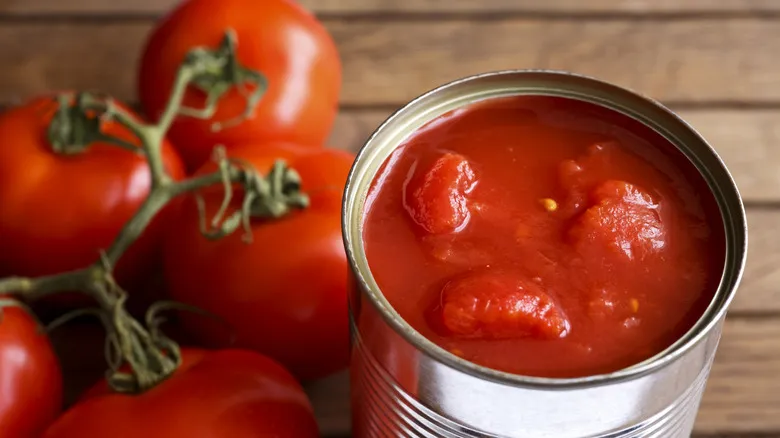
Canned tomatoes are an essential item in the kitchen, elevating simple meals into rich, flavorful creations with little effort. Although they may not be ideal for dishes that call for fresh tomatoes, such as salads, their soft consistency makes them particularly valuable in slow-cooked recipes. Chef Theo Michaels emphasizes that canned tomatoes "enhance the depth of various sauces, stews, curries, and dishes that require a bit of moisture." Unlike fresh tomatoes, which can fluctuate in quality throughout the year, canned tomatoes offer a dependable option you can rely on.
In addition to their texture, canned tomatoes save considerable time and effort. They typically require minimal peeling or chopping, making them perfect for quick weeknight meals or when cooking for a large group. Their long shelf life ensures they are a pantry essential that is always on hand. For an added layer of flavor, roasting canned tomatoes "can caramelize their natural sugars, enriching their taste with depth and complexity," as noted by Julia Chebotar. With their convenience and consistent quality, canned tomatoes are a versatile ingredient that simplifies cooking and can even enhance the flavor of your dishes.
Canned artichokes
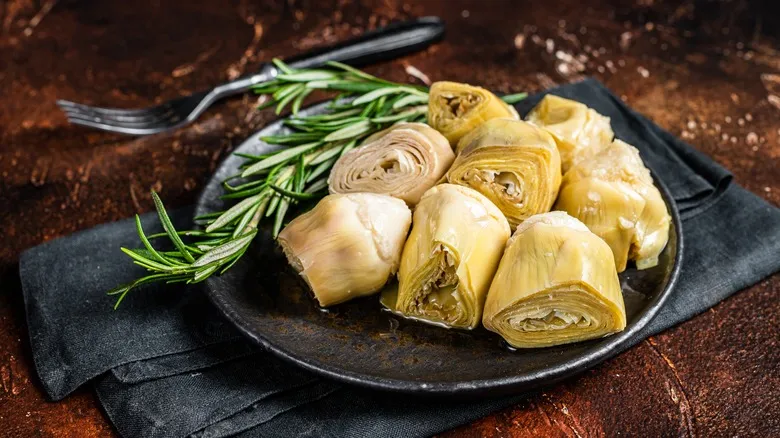
Canned artichokes are a game changer in the kitchen, especially since fresh artichokes can be quite a chore to prepare. Each fresh artichoke requires significant time and effort for a minimal amount of edible parts, involving peeling, trimming, and dealing with prickly leaves. "Canned artichokes are tender and ready to use, which saves both time and effort," explains Julia Chebotar. For her, the convenience and flavor of canned artichokes really stand out in quick recipes like dips and salads, allowing you to skip the tedious prep work and savor the deliciousness of artichokes without the hassle.
To maximize the benefits of canned artichokes, it's essential to keep in mind that they tend to be quite soft. "Be mindful of adding them towards the end of cooking to prevent them from breaking down in the dish," advises Theo Michaels. This approach allows you to enjoy their tenderness without them becoming mushy. When selecting canned artichokes at the store, opt for those packed in water rather than oil if you're looking to reduce added fat. However, it's worth noting that whether they're in water or oil, they often contain a fair amount of added salt. To manage both fat and sodium levels, simply rinse them well before use. This quick and easy tip can help make your artichoke-based recipes lighter and healthier.
Canned beans

Whether you're whipping up a comforting black bean soup, a tangy pinto bean salad, or simply tossing them into your quesadilla, canned beans are an essential pantry staple. As Julia Chebotar states, "Canned beans provide a quick and convenient option while preserving their nutritional benefits." These beans are rich in fiber, protein, and vital nutrients such as iron and zinc, making them excellent for enhancing digestive health, supporting a balanced gut, and helping to regulate blood pressure.
One of the greatest advantages of canned beans is the time they save. Since they are pre-cooked and ready to use, they significantly reduce preparation time and effort. In contrast, soaking and cooking dried beans from scratch can take several hours—typically requiring six to eight hours of soaking followed by an additional hour or two of cooking. To maximize the benefits of canned beans, Chebotar suggests a quick rinse, which can be transformative. Rinsing not only lowers sodium levels but also eliminates any metallic taste from the canning liquid, resulting in a fresher flavor that enhances your dishes. For an added burst of flavor, she also recommends sautéing them in garlic and olive oil.
Canned tuna
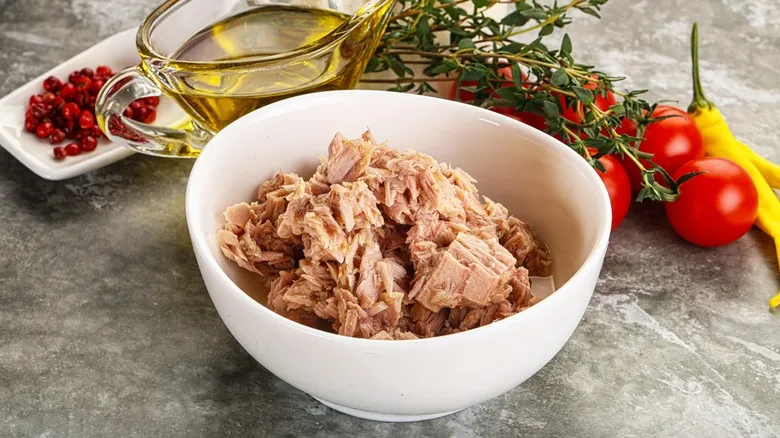
Let’s be honest: Canned tuna stands out on its own. While it doesn’t serve as a substitute for fresh tuna, it provides a completely different experience. For instance, you wouldn’t use it in a delicate sushi roll or a fresh ceviche, but when it comes to a simple and satisfying tuna salad or a robust pasta dish, it’s hard to beat. Typically, you wouldn’t opt for fresh tuna for those types of meals anyway.
Speaking of fresh tuna, its price can be quite steep when you’re just looking to prepare a meal. In contrast, canned tuna is a fantastic budget-friendly choice that offers nearly all the same nutrients: high-quality protein, omega-3 fatty acids, and essential vitamins and minerals. Given its satisfying and healthy profile, why spend a fortune on fresh tuna for everyday recipes? Additionally, its convenience is unmatched. When you need a quick, nutritious option, canned tuna is always ready to go with just a simple twist of the can opener. For an even healthier option, Julia Cheborar suggests opting for canned tuna packed in water instead of oil to reduce calories and fat.
Canned lentils
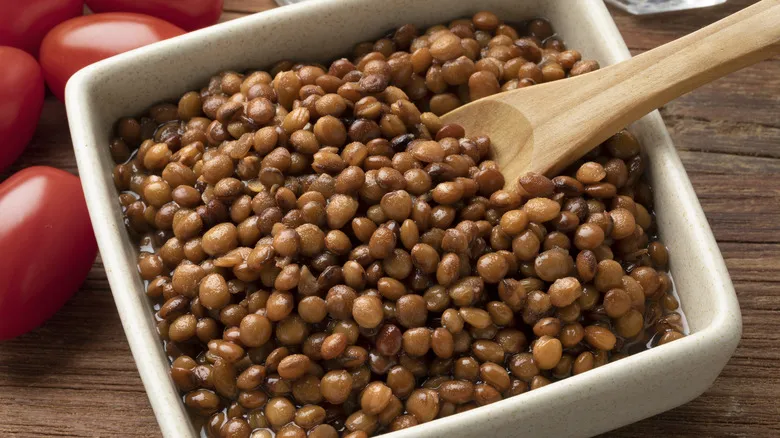
Canned lentils offer numerous advantages, particularly when compared to fresh ones. Firstly, their rich, earthy taste and satisfying texture are comparable to that of fresh or dried lentils. Additionally, you won’t lose out on any of their heart-healthy fiber, plant-based protein, or essential vitamins and minerals. The primary distinction is that canned lentils typically contain higher sodium levels, but a thorough rinse can help reduce this before you add them to your dishes.
Chef Theo Michaels aptly notes that canned lentils "are fantastic for their convenience; there's no need for overnight soaking, making them perfect for a last-minute addition to any meal." He also emphasizes that "they are incredibly cost-effective," and their long shelf life means that opting for canned lentils "also helps minimize food waste." This translates to less time spent on preparation and more time savoring your meals, all while being budget-friendly and environmentally conscious.
Canned pumpkin

Fresh pumpkins sound appealing in theory, but the preparation process? That's an entirely different challenge. You have to contend with the tough outer skin, scoop out the seeds and stringy insides, and then cook it down to achieve the perfect consistency. Even after all that work, fresh pumpkin can be unpredictable — it might end up stringy, watery, or simply not have the right texture for your dish. On the other hand, canned pumpkin is much simpler to handle. Just pop open the can, and you're all set to start cooking. Chef Julia Chebotar emphasizes that canned pumpkin provides a smooth, consistent texture every time, making it ideal for everything from baking pies and muffins to creating soups and savory meals.
From a nutritional standpoint, canned pumpkin is an excellent source of vitamin A, beta carotene, and fiber, so you’re not compromising on health by choosing the convenient option. However, it’s wise to check the label for any added ingredients before purchasing, as many canned pumpkin varieties are not entirely pure. Some brands may include sugar or spices, which could be suitable for certain recipes but may not be ideal if you want the authentic pumpkin flavor. Choose pure, unsweetened pumpkin purée to keep it as healthy as possible. You can always add your own sweeteners and spices later on.
Canned chickpeas
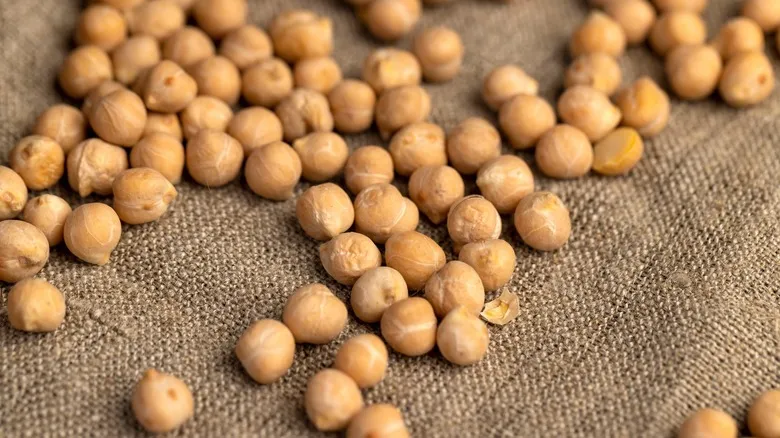
Canned chickpeas, commonly referred to as garbanzos, can save you a significant amount of time compared to their fresh, dried counterparts. Preparing dried chickpeas involves soaking them overnight and boiling them for hours, which requires considerable planning. In contrast, with canned chickpeas, you simply open the can, rinse them to eliminate excess sodium or any metallic taste, and you’re ready to start cooking in just minutes. Julia Chebotar emphasizes this convenience: "Canned chickpeas are the best way to make a quick, healthy, nutritious hummus." Even if hummus isn't your preference, canned chickpeas are versatile and can be used in a variety of dishes, such as hearty salads, soups, and curries.
Like their fresh counterparts, canned chickpeas are packed with fiber, protein, and essential vitamins and minerals. They also retain the same nutty flavor and grainy texture, whether you choose fresh or canned. In terms of cost, canned chickpeas are only marginally more expensive than dried ones. Considering the substantial time and effort they save, they are definitely worth it. Overall, canned chickpeas provide the same flavor, texture, and quality as fresh ones, making it a smart choice to keep a few cans in your pantry for easy meal preparation.
Canned spinach
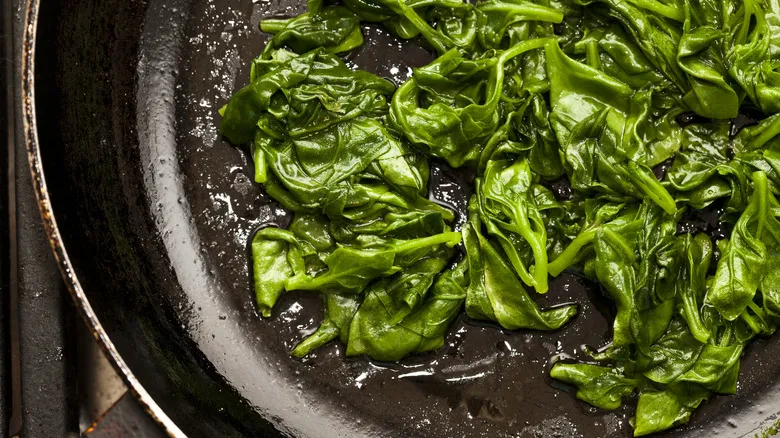
While fresh spinach is perfect for salads or light stir-fries, where its crisp texture is desired, canned spinach excels in many slow-cooked recipes. As Theo Michaels points out, "Canned spinach is fantastic for certain curries." He also highlights that "to achieve the same volume as canned, you'd need to purchase kilos of fresh spinach." Therefore, while fresh spinach isn't usually overly expensive, canned spinach remains the more budget-friendly option. With those savings, you could treat yourself to a premium olive oil to enhance your home-cooked dishes.
In terms of nutritional value, canned spinach is quite comparable, providing a good amount of essential vitamins and minerals, including vitamins A, C, and K1, along with iron and calcium. Chef Michaels notes that the spinach used for canning comes from "older, more fibrous leaves rather than baby leaves," which tend to be richer in fiber and other nutrients. This makes opting for canned spinach a perfectly acceptable choice. To maximize the flavor of canned spinach when sautéing, consider Julia Chebotar's suggestion: add a splash of lemon juice, vinegar, or even a bit of wine. This not only brightens the flavor but also adds a depth that can elevate your dish significantly.
Canned coconut milk
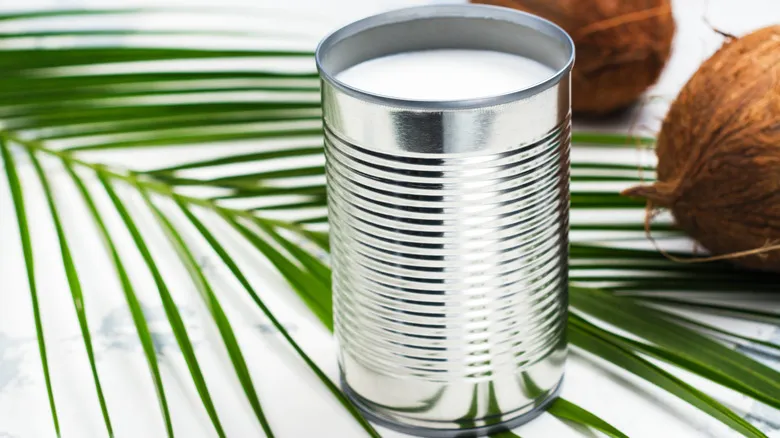
Creating fresh coconut milk can be quite a process. First, you need to locate a fresh coconut at the store, crack it open, scoop out the flesh, and then blend it with water before straining to extract the milk. While some may see it as a labor of love, it can be messy and time-consuming, and the flavor and texture can vary significantly based on your preparation method. Fortunately, canned coconut milk is readily available and offers a quality and nutritional profile similar to that of fresh coconut milk. There may be a slight difference in flavor freshness, but it retains its healthy fats and nutrients. Additionally, canned coconut milk has a long shelf life, allowing you to keep it on hand without the worry of spoilage.
For almost any recipe that requires coconut milk, the convenience and consistency of canned options are hard to surpass. Julia Chebotar captures it perfectly: "Canned coconut milk maintains a rich, creamy flavor, essential for curries and desserts... it's also a fantastic choice for creamy soups." This makes canned coconut milk an essential ingredient for recipes that benefit from its rich texture, all while saving you considerable prep time and effort.
Canned anchovies

Canned anchovies provide a bold flavor that can significantly differ from that of fresh anchovies. As Theo Michaels states, "Canned anchovies are completely distinct, imparting a salty umami taste to dishes that fresh ones simply can't match." This difference arises from the canning process, which involves curing and preserving the anchovies in salt, enhancing their rich, savory flavor, often more intense than that of fresh anchovies. Additionally, like many canned fish, their texture tends to be firmer compared to the fresh variety. This characteristic makes canned anchovies ideal for blending into sauces or serving as a hidden ingredient in recipes such as pasta or dressings.
Moreover, fresh anchovies can be challenging to source and typically require special preparation. Filleting them can be a bit labor-intensive, and their availability may vary based on your location and the season. In contrast, canned anchovies are not only widely accessible but also much simpler to use, as they require no additional preparation. Similar to fresh anchovies, the canned version is rich in omega-3 fatty acids, calcium, and protein. If you're concerned about fat content, opt for anchovies packed in water instead of oil, as they will be significantly lighter.
Canned jackfruit

One of the greatest advantages of canned fruit is its year-round availability, unlike fresh fruit that is often limited to specific seasons. If you're on the hunt for tropical fruit, fresh options may be scarce in many grocery stores. Theo Michaels highlights this issue in relation to jackfruit, a fruit indigenous to India. He emphasizes the convenience of canned jackfruit, which is a staple you should have in your pantry, noting that preparing fresh jackfruit can be quite labor-intensive. With its large size and tough exterior, extracting the edible flesh from fresh jackfruit can be a complex and time-consuming task. In contrast, canned jackfruit allows you to enjoy the unique benefits of this fruit without the hassle.
As with most canned fruits, it's important to watch out for added sugars in canned jackfruit, as they can alter the taste and significantly affect its nutritional profile. Michaels recommends choosing canned fruit that is "packed in their own juice rather than overly sweet syrups," as this helps to keep sugar and calorie content lower. Aside from the potential for added sugar, canned jackfruit is nutritionally comparable to its fresh counterpart. It is rich in dietary fiber and packed with essential vitamins and minerals, including vitamin C and potassium. While canned jackfruit may be slightly softer than fresh, it still provides a satisfying, meat-like texture, making it an excellent ingredient for dishes like vegan pulled "pork."
Recommended

How This Common Habit Turns Your Knife Block Into A Safety Hazard
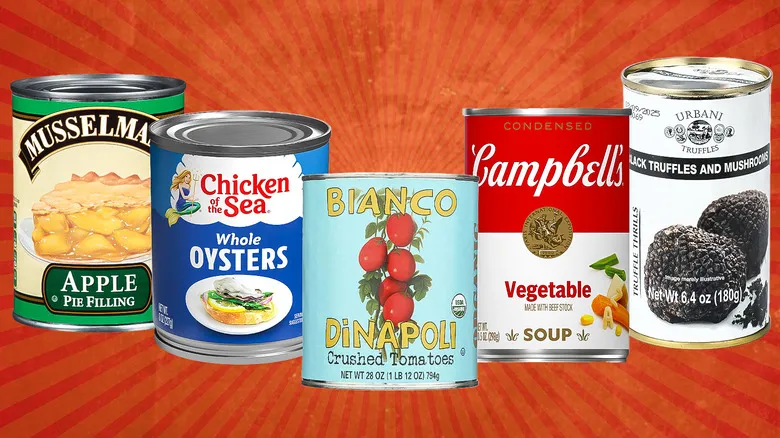
12 Canned Goods That Aren't Worth The Price Tag
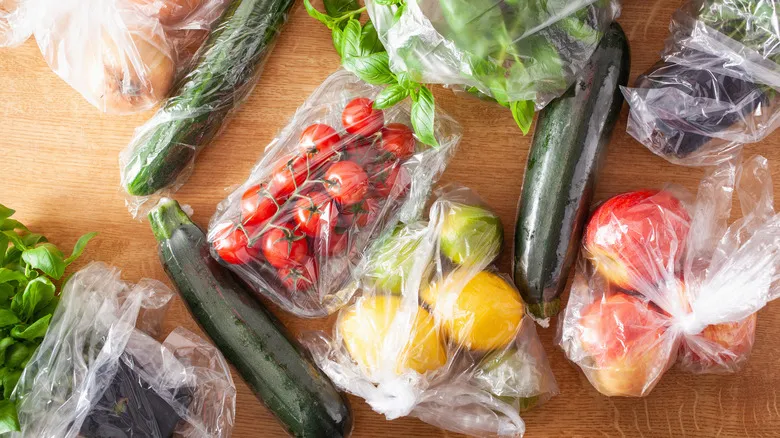
The Problem With Storing Produce In The Plastic Bag They Came In
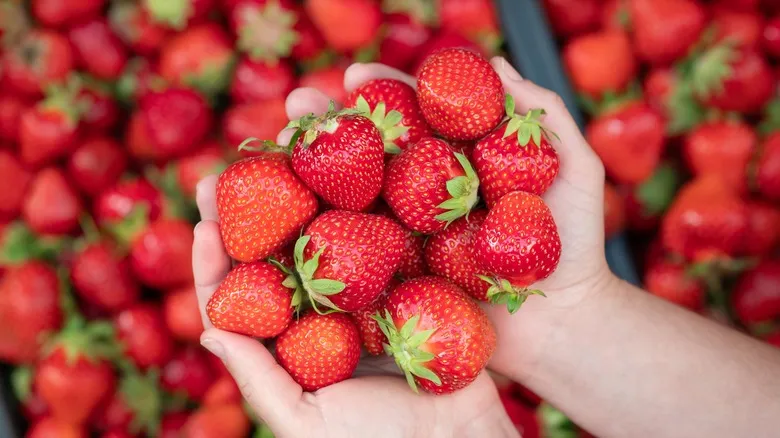
The Best Way To Prevent Mold On Fresh Berries
Next up

